2022 Mercedes C-Class Delivers Sleepy Styling but Monster MPGs
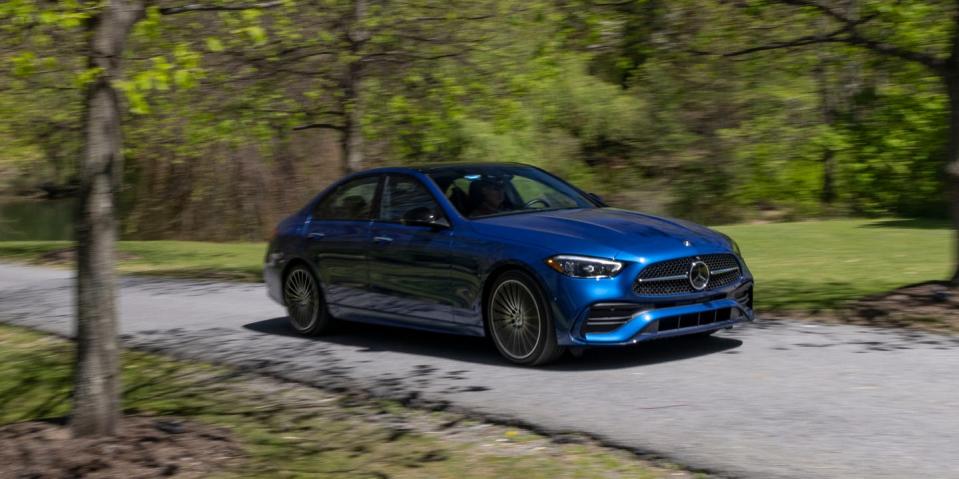
Six-cylinder power is not available, but an updated version of Mercedes’ well-regarded M254 turbocharged four-cylinder gets the job done nicely with 255 hp.
A 48-volt mild-hybrid system contributes to an outstanding 35.7 mpg during our test drive in New York and New Jersey.
Mercedes designers convinced management that interior color options must be offered: blazing red, bold caramel, and ivory. They're sharp.
Mercedes-Benz, one of many deep-rooted legacy automakers planting new and different seeds as the world of mobility pivots to electrification, has to keep the brand loyalists happy, and that means a significant number of consumers who just aren’t interested in switching from gasoline engines to all-electric vehicles that require frequent plugging in.
For these customers, Stuttgart delivered a sensational new-generation S-Class sedan less than two years ago, then updated the E-Class sedan. And now the C-Class—which used to be the entry point as the “Baby Benz”—comes along, all new, borrowing heavily from the technology and styling cues of the S-Class.
That type of product cadence is fairly typical in the auto industry, keeping in mind all the other internal-combustion models in the pipeline, particularly the SUVs and crossovers that are paying the bills for every automaker under the sun.
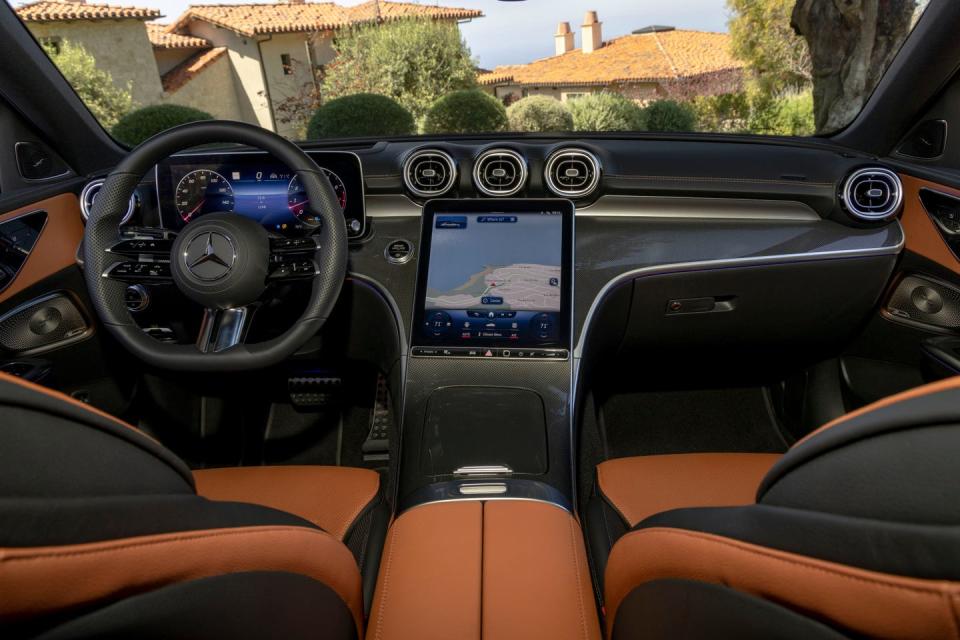
Lost in this product-development haze is the enormous resources and staffing devoted to the all-electric cars on which Mercedes-Benz—a progressive European brand that wants to help slow climate change—has pegged its future. The sleek EQS sedan is already out (and outselling its gasoline rivals by a wide margin), and a lot more EVs are headed our way as the team in Stuttgart tries to one-up Tesla by leveraging a century of automotive experience.
This backstory is necessary because, less than 10 years ago, an all-new C-Class was big news in the compact luxury sedan segment it either led or was fighting to lead, year after year. And yet, between 2015 and 2019, C-Class sales in the US plummeted from 86,000 units to 46,000.
With volume cut nearly in half in five years, you know some bean counter was wondering aloud whether an all-new C-Class made any sense at all. We’re glad that voice was silenced because the 2022 C 300, which comes available with 4Matic all-wheel drive, is more than competitive, comes with a reasonable starting price of $43,550, and delivered outstanding fuel economy during last week’s test drive in New York and New Jersey.
The new C-Class is not flawless, however, particularly with its conservative styling. The front end is reshaped and taillamps are streamlined and more prominent, stretching around the rear corners and reaching almost to the license plate.
From the side, the sheetmetal creases are less pronounced than on the previous model. Overall, the new C-Class looks more mature, like a smaller version of the S-Class (while being 2.5 inches longer than the old C). The design team clearly was kept on a short leash.
On the performance front, this is no AMG model, and six-cylinder power is not available. An updated version of Mercedes’ well-regarded M254 turbocharged four-cylinder (from the modular engine family) gets the job done nicely with 255 hp (at 5800 rpm) and 295 lb-ft of torque, available at a low 2000 rpm, which should be good for a 0 to 60 mph sprint in 5.9 seconds, according to Mercedes.
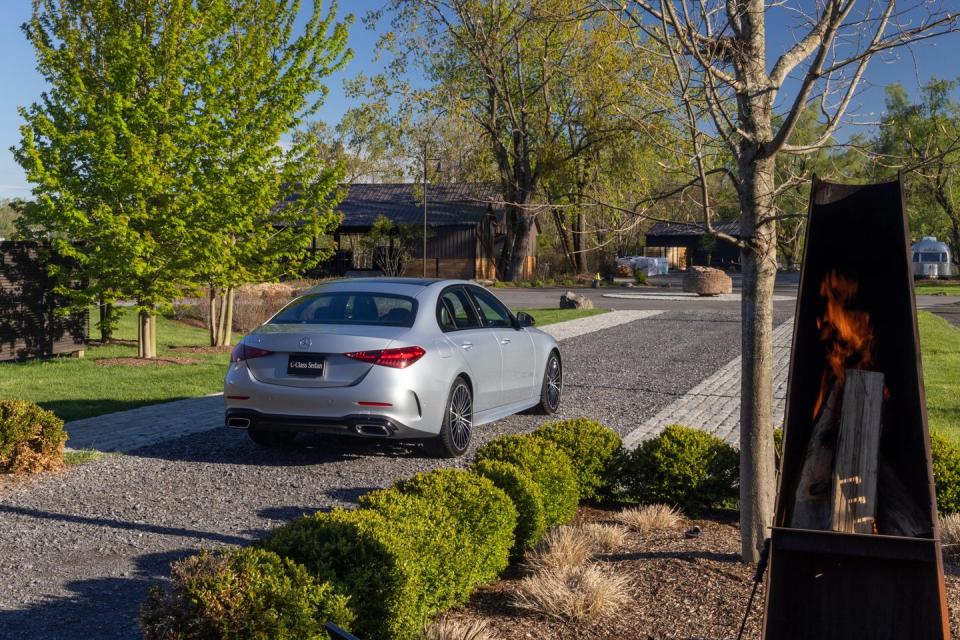
Capable yes, but the powertrain does not sell the new C-Class, unless you’re shopping for fuel efficiency. Unlike the previous model, this one benefits from a starter-generator now integrated within the housing of the nine-speed automatic transmission as part of a 48-volt mild-hybrid electrical system that adds 20 hp (for short spurts) and a substantial 148 lb-ft of extra torque.
This 48-volt system makes for quick, smooth engine restarts when lifting off the brake as the traffic light turns green, and at certain speeds you’ll be able to glide along on the highway when the engine shuts off because enough juice has been regenerated to the battery through the course of braking. This is standard on every C-Class, which is great for consumers while simplifying the build process at plants making the new C in Germany, China, and South Africa.
On our 100-mile highway route from Kingston, New York, to Newark airport, our rear-drive C 300 (sticker priced at $57,970) delivered a stunning 35.7 mpg, while never once feeling or sounding like an econo-box. Likely enhancing engine performance was the twin-scroll turbocharger, updated for quicker response with the help of the Mercedes-AMG Petronas Formula 1 team.
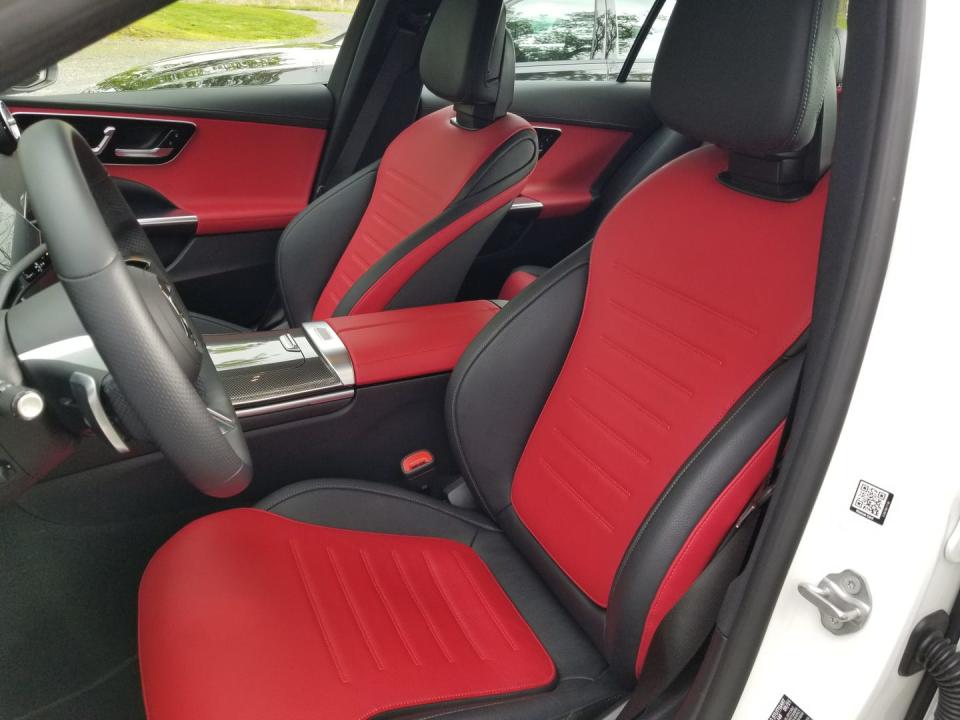
Standard on the new C 300 is an Agility Control suspension with continuously adjustable damping that makes for a perfectly comfortable ride from a four-link front suspension and a multi-link rear. An AMG sport suspension is available, but C 300 customers likely will not be looking for a firmer ride than the standard setup.
Our test model was loaded with driver-assistance technologies, and the Distronic adaptive cruise control worked well. Less impressive (and this is a technology complaint across multiple brands) is the Active Steering Assist, which acts like a virtual rumble strip to nudge you into the center of the lane, in case you’re drifting off line.
The system is less annoying when the blinker is used for actual lane changes. If you’re intentionally hugging one side of the lane to avoid a splattered raccoon, though, this technology doesn’t care: It wants you lane-centered.
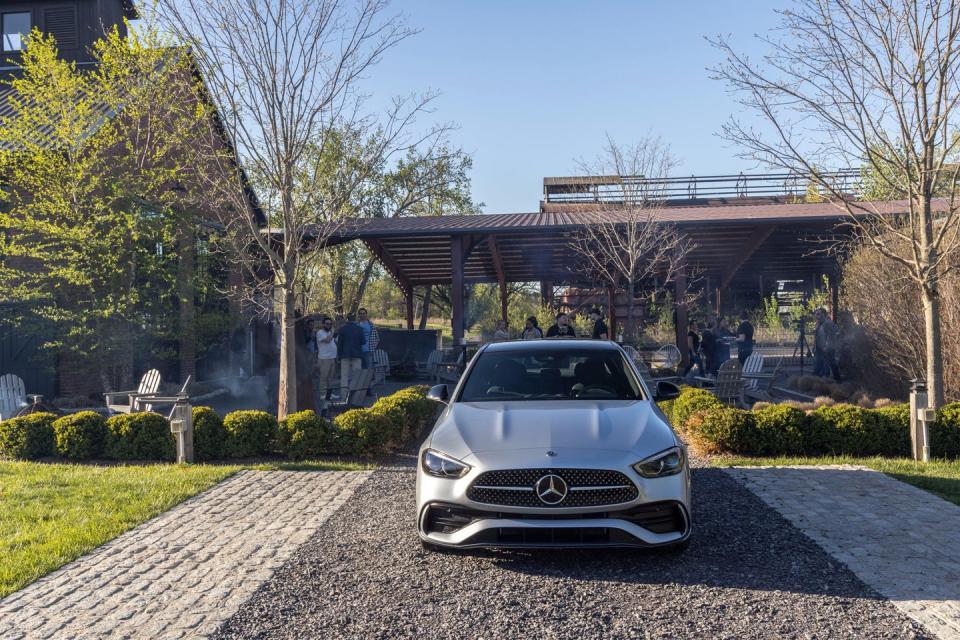
Inside, the new C-Class switches from a horizontal central display screen with a palm-rest controller to a larger 11.9-inch touchscreen where everything happens: climate control, entertainment, performance gauges, vehicle settings, and navi directions—including arrows flashing as your exit approaches.
There’s no volume knob and not a single hard button in the center console—just a few capacitive switches at the base of the touchscreen for selecting dynamic drive mode, or calling up vehicle settings, or sliding the volume up or down. The only hard button on the instrument panel is for starting and stopping the engine, right of the steering wheel (on which you’ll also find the usual controls, many of them redundant).
Between the vertical touchscreen, the 12.3-inch digital instrument cluster and the generally clean layout, you’ll love this cockpit if you feel likewise about the latest S-Class: They are virtually identical, although the S-Class has four upper vents on the dashboard, instead of three in the C-Class.
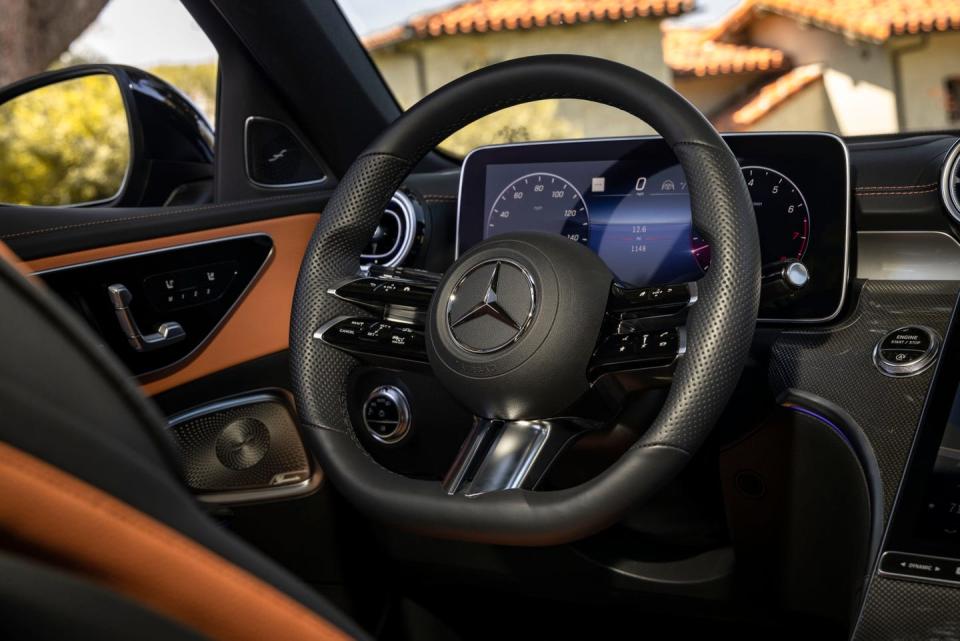
And even though the vast majority of C-Class buyers end up picking a plain black interior with real leather or faux, Mercedes designers convinced management that color options must be offered: blazing red, bold caramel, and ivory. I, for one, am most grateful.
The new C-Class is now in showrooms, with base Premium trim, Exclusive trim (starting at $46,850), and Pinnacle trim (starting at $48,550). Tack on an extra two grand for 4Matic AWD. There’s a lot of content here for the money.
Is the C-Class the safe and predictable purchase? Sure, probably for the next several years. But sales growth in the industry hinges on the success of all-electric vehicles—for EV startups that can’t rub two nickels together as well as established biggies, like Mercedes-Benz.
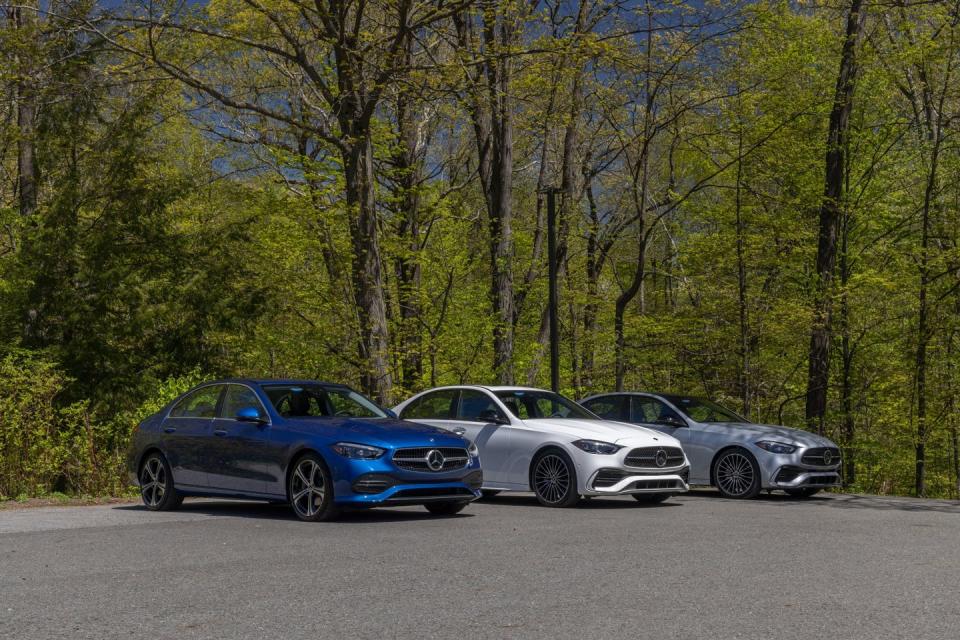

 Yahoo Autos
Yahoo Autos 